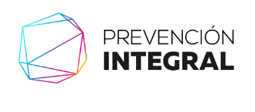De la evidencia a la acción - ¿qué funciona?
De la evidencia a la acción - ¿qué funciona?
La seguridad y salud en el trabajo (SST), se pueden beneficiar considerablemente de la nueva ola de "acción basada en la evidencia", llegando a ser más objetiva y consciente de la evidencia disponible. De esta manera, la SST puede comenzar a favorecer las diferentes formas de intervención preventiva.
La evidencia es una herramienta para probar o refutar algo, es fundamento de creencia. Todos tenemos creencias sobre los efectos de las intervenciones preventivas. Por ejemplo, algunos de nosotros creemos firmemente que todas las soluciones vienen de la introducción de una legislación más estricta, y otros creen que la formación y educación de los trabajadores es la mejor manera de resolver los problemas de seguridad y salud. La evidencia nos puede hacer cambiar estas creencias y asumir una visión diferente de lo que es efectivo.
¿Cuánta evidencia se necesita para la acción preventiva? La fuerza de la evidencia puede ubicarse a lo largo de un continuo que abarca desde observaciones anecdóticas, pasando por estudios in vitro hasta un experimento bien controlado con un seguimiento a largo plazo. Es bien sabido que en la práctica, la fuerza de la evidencia científica disponible no se asocia linealmente con la fuerza de la acción resultante. Los experimentos bien controlados permiten acotar el espacio para explicaciones alternativas, pero, por lo general, el efecto de la intervención constituye la mejor evidencia científica.
El proceso de toma de decisiones para la acción práctica está fuertemente influenciado por factores distintos de la mera ciencia. El primer paso es evaluar la evidencia científica para la evaluación causal, y el segundo se refiere a los elementos extra-científicos. Algunos ejemplos de estas influencias incluyen la falta de consenso en la evidencia, el factor de la famosa "duda", los aspectos sociales y económicos, una supuesta falta de aplicabilidad de las pruebas, el intercambio de conocimientos inútiles, un entorno que no es propicio para el cambio de políticas, y la confianza en informaciones no científicas , como la experiencia y opiniones personales.
En la práctica diaria, los especialistas en seguridad y salud están involucrados en la evaluación de riesgos para la salud y la seguridad en el trabajo, en ofrecer recomendaciones o acciones para la prevención y gestión de riesgos y en la prevención de enfermedades profesionales, enfermedades relacionadas con el trabajo y discapacidad laboral. En el mejor de los casos, las directrices se basan en pruebas científicas sólidas, basadas en revisiones sistemáticas. El Grupo Cochrane de Revisión de la Salud se ha establecido para proporcionar una plataforma para llevar a cabo revisiones sistemáticas de una manera estandarizada.
Está claro que la toma de decisiones en la política y la práctica en el ámbito de la SST rara vez sólo se basa en la evidencia de la investigación. Por lo general, se incorporan los conocimientos y habilidades profesionales. En el futuro creo que el uso de evidencia científica para la toma de decisiones y para la acción práctica de la prevención se incrementará. Esto requiere una evaluación más eficaz de las pruebas de la SST, algo que debe ser sistemáticamente apoyado por los responsables políticos europeos.
Occupational safety and health (OSH) can benefit considerably from the new wave of "evidence-based action", becoming more objective, and aware of the evidence that is available, or not available. In this way, OSH can begin to favour different forms of preventive intervention.
Evidence is tool for proving or disproving something; it is grounds for belief. We all hold beliefs about the effects of preventive interventions. For example, some of us strongly believe that all solutions come from introducing more stringent legislation, and others believe that training and educating workers is the best way to solve OSH problems. Evidence can make us change these beliefs and take on a different view of what is effective.
How much evidence is needed for preventive action? The strength of the evidence can be positioned somewhere along a continuum that varies from anecdotal observations through in vitro studies to a well-controlled experiment with a long follow-up. It is well-known that in practice, the strength of available scientific evidence does not associate linearly with the strength of the resultant action. Well-controlled experiments leave the least room for alternative explanations, but the effect of the intervention usually provides the strongest scientific evidence.
The decision-making process for practical action is strongly influenced by factors other than science alone. The first step is evaluating the scientific evidence for causal assessment, and the second involves extra-scientific elements. Examples of these influences include a lack of consensus on the evidence, the famous factor of 'doubt', social and financial aspects, a perceived lack of applicability of evidence, ineffectual knowledge exchange, an environment which is not conducive to policy change, and reliance upon non-scientific information, such as personal experience and opinions.
In prevention, the harm caused by the intervention is usually a minor issue. If the intervention actively involves exposure to something, such as deliberate use of drugs in chemoprevention, e.g., aspirin in preventing cardiovascular illness, the decision must involve a careful analysis of the benefits and harms. This means that since only a small fraction of the population will ever benefit from the chemopreventive treatment, it is possible that when everyone is exposed, even a small increase in risk may outweigh the benefits at the population level (the so-called 'prevention paradox'). This means that preventive interventions call for even stronger evidence of dominant benefits than that needed to merely prove something as hazardous The factor must then be moved from the work environment.
Environmental interventions can be carried out through eliminating the exposing factor (e.g., a particular solvent in a process). Some behavioural interventions involve training and education as the means to lower the risk (e.g., the use of personal protective equipment or more hygienic behaviour). Medical interventions could entail for instance pre-employment examinations or chemoprevention with specific drugs such as aspirin in colorectal cancer prevention. The strength of scientific evidence needed for all these actions may be quite different, because the ensuing action involves different levels of potential additional harm.
In daily practice, OSH specialists are involved in assessing risks to health and safety at work and provide recommendations or actions for risk prevention and management, and the prevention of occupational diseases, work-related diseases and work disability. In the best of cases, the guidelines are supported by strong scientific evidence, based on systematic reviews. The Cochrane Occupational Safety and Health review group has been established to provide a platform for carrying out systematic reviews in a standardized fashion.
It is clear that decision-making in policy and practice in the field of OSH will seldom be based on evidence from research alone. It will usually incorporate professional expertise and skills, meaning that the concordance derived from science will be translated into coherence, which will accumulate all the evidence for the ensuing action. In the future, I believe that the use of scientific evidence for decision-making and for practical preventing action will increase. This calls for a more efficient evaluation of evidence for OSH, something which should be systematically supported by European policy-makers.


